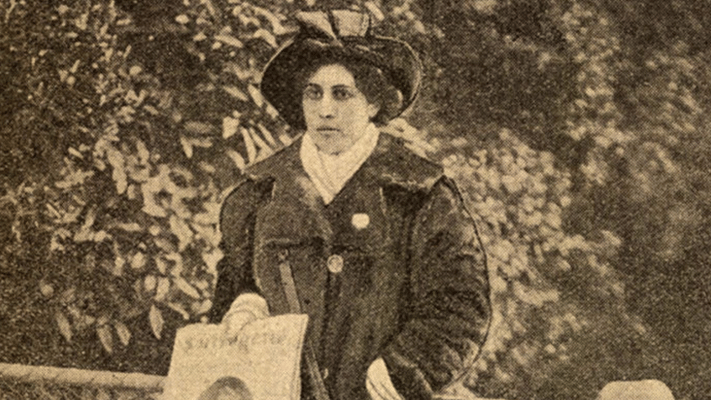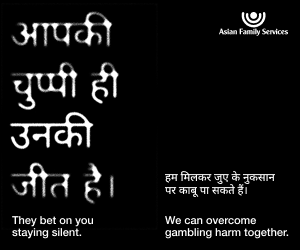The Princesses’s Journey: Trials & Tribulations Of Sophia Duleep Singh

The Remarkable Life of Princess Sophia is an interesting tale of aristocratic splendour, activism, and heritage in 1894, 18-year-old Sophia Duleep Singh, the grand daughter of Maharaja Ranjit Singh, completed her education in Germany and upon her return to England, was granted residence at Hampton Court by Queen Victoria.
A year later, Queen Victoria held a ceremony for royals and aristocratic families, to which Sophia and her sisters, Bamba and Catherine, were invited. On that day, the girls dressed in their finest white silk gowns, which stretched down to the floor, and adorned themselves with exclusive pieces of jewellery inherited from their grandmother, Maharani Jindan.
The ceremony opened doors for Princess Sophia to the aristocratic families and her life became a revolving door of balls, parties, and banquets. Fashion pages frequently declared her one of the best-dressed women in the country and credited her with making emerald gems popular.
She exuded great style and poise, even ensuring that her servants were the best-dressed in London, with their deep burgundy uniforms adorned with gleaming brass buttons engraved with the princess’s monogram, ‘SDS.’
In 1896, Sophia was moved to Faraday House, opposite Hampton Court, by Queen Victoria, along with an allowance of $200 a year for its upkeep. Sophia, fond of animals, began collecting dogs of all shapes and sizes and would walk them in the royal gardens of Hampton Court, for which
she had her own set of keys.
Her interest in dogs peaked when Sophia’s eldest brother Victor married dog-lover Anne Blanche Alice, with whom Sophia discovered a whole new world where dogs were appreciated.
Her brother Victor assisted her in choosing the best breeds, and over time, Sophia became one of the best breeders in the country, being featured in a popular book of the era.
Princess Sophia also enjoyed sport, participating in the hockey team when the world’s first women’s field hockey club emerged. Defying societal bans, a determined Sophia also joined a cycling movement, becoming a first-rate cyclist, and was featured in an article with a proud, stiff photo of her with her bicycle.
On January 22, 1901, Queen Victoria passed away, and an extraordinary coronation ceremony was held in North India to unveil the new king, her son Edward VII. Although many aristocrats received invitation, the princess's request was denied, leading her to travel to India inconspicuously with
Bamba and Catherine.
Upon their arrival in India in 1903, they were warmly welcomed by the people who held their grandfather Maharaja Ranjit Singh in high esteem. During their nine-month stay, Sophia deeply explored her heritage and was profoundly affected by the contrast of poverty she encountered.
When returning to England, Sophia was struck by the sight of shivering, thin, dark, and hungry lascars, the native Indian seamen on the docks. This encounter ignited a passion within her, and she dedicated herself to their cause. Sophia embarked on fundraising efforts, provided food and shelter, and collaborated with her affluent friends to establish a club for the lascars in Victoria Docks.
In 1906, Sophia again left for India to be with her sister, Princess Bamba. During this trip, the sisters toured Punjab, and wherever they went, they were showered with flowers and greeted with the slogans ‘Jo Bole So Nihal’, ‘Sat Sri Akal’. Six months later, Sophia returned to England, but before leaving, she paid homage to her grandfather Maharaja Ranjit Singh’s tomb.
Back in England, Sophia was introduced to the members of the Women’s Social and Political Union (WSPU) by her friend. She fully supported the cause by refusing to complete the census, instead writing ‘No Vote No Census’ on the form. Sophia also distributed Suffragette newspapers outside the Hampton Court Palace.
In 1909, Princess Sophia protested by refusing to pay licenses for her dogs and became an active member of the Women’s Tax Resistance League. When authorities could not force the princess to pay her taxes, they seized her seven-stone diamond ring, which exceeded the value of her fines and court costs combined, and auctioned it off. On January 6, 1914, authorities again barged into Faraday
House and confiscated her necklace, comprising 131 pearls, and a diamond and pearl-studded gold bangle.
During the outbreak of World War I (WWI), an overwhelming number of wounded Indian soldiers began
arriving in England. Sophia joined Matron McCall Anderson's team, dedicating much of her time to tending to wounded Sikh soldiers who felt honoured to be cared for by Maharaja Ranjit Singh's granddaughter.
By 1915, the demand for medical provisions increased and on 'Our Day' in 1916, Princess Sophia along with a small group of Indian women, raised funds for soldiers’ welfare. In 1918, Sophia received a telegram about her brother Victor’s death from a massive heart attack in Paris. Due to wartime travel restrictions, she was unable to say a final farewell.
After WWI, the Indian Office under the British Raj began reducing Sophia’s allowances, and by 1923, further cuts forced her to let go of her staff, leading to sadness and depression. Concerned, Princess Bamba requested Sophia to come to India and in 1924, Sophia left for India without
seeking permission from the Government, accompanied by her housekeeper, Boise. In India, the sisters journeyed to Nasik, the place where their grandmother Maharani Jindan had been cremated.They paid homage at the small tomb on the banks of the Godavari and brought their grandmother’s remains back to Lahore.
Upon her return to England in 1925, Sophia learned about her brother Prince Frederic’s poor health and after a year he passed away from a heart attack, marking the end of 'The Last Prince of Lahore.' At the outbreak of World War II, Princess Catherine, Sophia’s sister, returned to England and bought Coalhatch House, which she renamed Rathenrea, in the tranquil village of Penn near London. Princess Sophia also moved nearby, to a house opposite Rathenrea, where she provided refuge to war evacuees, including a mother and her three children.
Tragically, on November 8, 1942, Catherine died suddenly of a heart attack, and her body was discovered by the caretakers the following day. The shock of her sister's death left Sophia reeling in grief, and she retreated into seclusion, overwhelmed by a profound sense of loss.
Sophia passed away peacefully at Rathenrea on August 22, 1948, at the age of 72. Despite her aristocratic upbringing and mixed heritage, she requested to be cremated in accordance with Sikh tradition and for her ashes to be scattered in India. Her final wish was fulfilled when Princess Bamba took her ashes to India, honouring Sophia's deep connection to her heritage.
Princess Sophia's life was a tapestry woven with privilege and hardship, activism and aristocracy, marked by her relentless pursuit of justice and deep-seated commitment to her heritage amidst personal and societal upheavals.
The Remarkable Life of Princess Sophia is an interesting tale of aristocratic splendour, activism, and heritage in 1894, 18-year-old Sophia Duleep Singh, the grand daughter of Maharaja Ranjit Singh, completed her education in Germany and upon her return to England, was granted residence at Hampton...
The Remarkable Life of Princess Sophia is an interesting tale of aristocratic splendour, activism, and heritage in 1894, 18-year-old Sophia Duleep Singh, the grand daughter of Maharaja Ranjit Singh, completed her education in Germany and upon her return to England, was granted residence at Hampton Court by Queen Victoria.
A year later, Queen Victoria held a ceremony for royals and aristocratic families, to which Sophia and her sisters, Bamba and Catherine, were invited. On that day, the girls dressed in their finest white silk gowns, which stretched down to the floor, and adorned themselves with exclusive pieces of jewellery inherited from their grandmother, Maharani Jindan.
The ceremony opened doors for Princess Sophia to the aristocratic families and her life became a revolving door of balls, parties, and banquets. Fashion pages frequently declared her one of the best-dressed women in the country and credited her with making emerald gems popular.
She exuded great style and poise, even ensuring that her servants were the best-dressed in London, with their deep burgundy uniforms adorned with gleaming brass buttons engraved with the princess’s monogram, ‘SDS.’
In 1896, Sophia was moved to Faraday House, opposite Hampton Court, by Queen Victoria, along with an allowance of $200 a year for its upkeep. Sophia, fond of animals, began collecting dogs of all shapes and sizes and would walk them in the royal gardens of Hampton Court, for which
she had her own set of keys.
Her interest in dogs peaked when Sophia’s eldest brother Victor married dog-lover Anne Blanche Alice, with whom Sophia discovered a whole new world where dogs were appreciated.
Her brother Victor assisted her in choosing the best breeds, and over time, Sophia became one of the best breeders in the country, being featured in a popular book of the era.
Princess Sophia also enjoyed sport, participating in the hockey team when the world’s first women’s field hockey club emerged. Defying societal bans, a determined Sophia also joined a cycling movement, becoming a first-rate cyclist, and was featured in an article with a proud, stiff photo of her with her bicycle.
On January 22, 1901, Queen Victoria passed away, and an extraordinary coronation ceremony was held in North India to unveil the new king, her son Edward VII. Although many aristocrats received invitation, the princess's request was denied, leading her to travel to India inconspicuously with
Bamba and Catherine.
Upon their arrival in India in 1903, they were warmly welcomed by the people who held their grandfather Maharaja Ranjit Singh in high esteem. During their nine-month stay, Sophia deeply explored her heritage and was profoundly affected by the contrast of poverty she encountered.
When returning to England, Sophia was struck by the sight of shivering, thin, dark, and hungry lascars, the native Indian seamen on the docks. This encounter ignited a passion within her, and she dedicated herself to their cause. Sophia embarked on fundraising efforts, provided food and shelter, and collaborated with her affluent friends to establish a club for the lascars in Victoria Docks.
In 1906, Sophia again left for India to be with her sister, Princess Bamba. During this trip, the sisters toured Punjab, and wherever they went, they were showered with flowers and greeted with the slogans ‘Jo Bole So Nihal’, ‘Sat Sri Akal’. Six months later, Sophia returned to England, but before leaving, she paid homage to her grandfather Maharaja Ranjit Singh’s tomb.
Back in England, Sophia was introduced to the members of the Women’s Social and Political Union (WSPU) by her friend. She fully supported the cause by refusing to complete the census, instead writing ‘No Vote No Census’ on the form. Sophia also distributed Suffragette newspapers outside the Hampton Court Palace.
In 1909, Princess Sophia protested by refusing to pay licenses for her dogs and became an active member of the Women’s Tax Resistance League. When authorities could not force the princess to pay her taxes, they seized her seven-stone diamond ring, which exceeded the value of her fines and court costs combined, and auctioned it off. On January 6, 1914, authorities again barged into Faraday
House and confiscated her necklace, comprising 131 pearls, and a diamond and pearl-studded gold bangle.
During the outbreak of World War I (WWI), an overwhelming number of wounded Indian soldiers began
arriving in England. Sophia joined Matron McCall Anderson's team, dedicating much of her time to tending to wounded Sikh soldiers who felt honoured to be cared for by Maharaja Ranjit Singh's granddaughter.
By 1915, the demand for medical provisions increased and on 'Our Day' in 1916, Princess Sophia along with a small group of Indian women, raised funds for soldiers’ welfare. In 1918, Sophia received a telegram about her brother Victor’s death from a massive heart attack in Paris. Due to wartime travel restrictions, she was unable to say a final farewell.
After WWI, the Indian Office under the British Raj began reducing Sophia’s allowances, and by 1923, further cuts forced her to let go of her staff, leading to sadness and depression. Concerned, Princess Bamba requested Sophia to come to India and in 1924, Sophia left for India without
seeking permission from the Government, accompanied by her housekeeper, Boise. In India, the sisters journeyed to Nasik, the place where their grandmother Maharani Jindan had been cremated.They paid homage at the small tomb on the banks of the Godavari and brought their grandmother’s remains back to Lahore.
Upon her return to England in 1925, Sophia learned about her brother Prince Frederic’s poor health and after a year he passed away from a heart attack, marking the end of 'The Last Prince of Lahore.' At the outbreak of World War II, Princess Catherine, Sophia’s sister, returned to England and bought Coalhatch House, which she renamed Rathenrea, in the tranquil village of Penn near London. Princess Sophia also moved nearby, to a house opposite Rathenrea, where she provided refuge to war evacuees, including a mother and her three children.
Tragically, on November 8, 1942, Catherine died suddenly of a heart attack, and her body was discovered by the caretakers the following day. The shock of her sister's death left Sophia reeling in grief, and she retreated into seclusion, overwhelmed by a profound sense of loss.
Sophia passed away peacefully at Rathenrea on August 22, 1948, at the age of 72. Despite her aristocratic upbringing and mixed heritage, she requested to be cremated in accordance with Sikh tradition and for her ashes to be scattered in India. Her final wish was fulfilled when Princess Bamba took her ashes to India, honouring Sophia's deep connection to her heritage.
Princess Sophia's life was a tapestry woven with privilege and hardship, activism and aristocracy, marked by her relentless pursuit of justice and deep-seated commitment to her heritage amidst personal and societal upheavals.










Leave a Comment